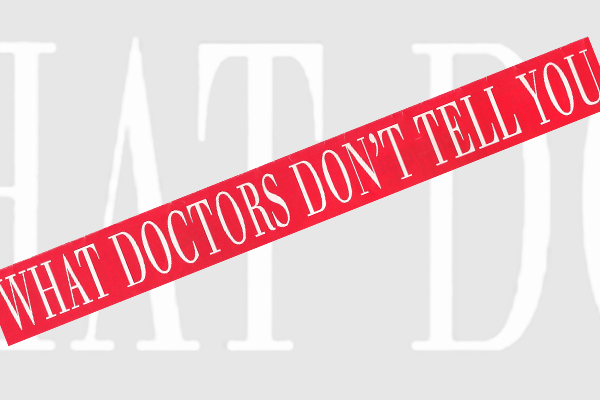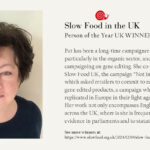Phytoestrogens: Hormone Heaven or Hormone Havoc?

Touted as the ‘natural cure’ for menopause, the high dose plant supplements may have strong oestrogenic effects on the body, with all the dangers of large doses of ordinary oestrogens.
As bad news about HRT keeps rolling in, conventional and alternative practitioners have found themselves scrambling around for something to give women complaining of menopausal symptoms. So far, phytoestrogens have fitted the bill marvellously. Depending on whose research you read, phytoestrogens have either no oestrogenic effect or only a weak one. They work, we’re told, by modifying the sensitivity of cells to physiological oestrogens as well as by modifying their production and metabolism. The result of this action on a given tissue can be either proestrogenic or antioestrogenic. Much attention has been focused on the antioestrogenic effect, which proponents say is protective. Phytoestrogens supposedly bind with oestrogen receptors in the body, preventing stronger and potentially more harmful oestrogens (both human and environmental) from taking hold and potentially causing cancer.
However, emerging evidence shows that phytoestrogens may not be all that weak. In sufficient quantities, they may cause all the same responses as physiological oestrogens (Endocrinology, 1998; 139: 4252-63).
The example of diethylstilbestrol (DES), an oestrogen given to women in the 1950s to prevent miscarriage, may be helpful. DES was considered a weak oestrogen in the sense that it did not compete with natural oestrogens for oestrogen receptors. Today, we are only beginning to understand the devastating generational effects of taking DES-research shows that even the granddaughters of women who took this hormone are at a higher risk of ovarian cancer.
Oestriol (an oestrogen metabolised from plant sources) is considered a weak oestrogen by some measures but a strong one by others. It is ‘weak’ because, when you compare equal amounts of natural oestrogen and oestriol, the latter has less of an effect on the body. However, animal data suggest that oestriol actually binds more strongly to receptors than DES does (J Steroid Biochem, 1977; 8: 151-5).
At the same time, oestriol can be considered ‘strong’ because, in large doses, it can produce quite profound effects. Again, we have mainly animal data to guide us but, in one human study, when 5 mg of oestriol was given to women intravaginally, this very large dose suppressed luteinising hormone (LH) production within two hours and suppressed follicle stimulating hormone (FSH) in five hours. A larger dose of 8 mg given orally had similar effects on LH and FSH after 30 days, and also had an oestrogenic effect on the vaginal epithelium (Fertil Steril, 1978; 30: 278-82).
Coumoestrol, found in high doses in red clover, is unique among phytoestrogens in that it has been shown to have a powerful oestrogenic effect six times that of regular iso flavones (Proc Soc Exp Biol Med, 1995; 208: 44-50).
Years ago, agricultural research showed that red clover could cause permanent infertility in sheep that consumed it (J Dept Agric West Aust, 1946; 23: 1-12). This effect was similar to that observed in animals exposed neonatally to oestrogens (J Reprod Fertil, 1981; Suppl 30: 223-30) and the strong oestrogenic effect of red clover has been confirmed in other studies (Proc Soc Exp Biol Med, 1995; 208: 92-7).
Another indication of the strength of an oestrogen is its ability to cause the uterus to enlarge. In terms of milligrams required to cause a certain rate of uterine enlargement, oestriol is slightly weaker than oestradiol (Gynecol Endocrinol, 1977; 11: 175-85). But given enough of the stuff, uterine enlargement will occur. When added to a long term culture of human breast cancer cells, oestriol stimulated their growth and overcame the antioestrogenic effect of tamoxifen (Cancer Res, 1977; 37: 1901-7). This has also been noted in laboratory studies.
The competition for oestrogen receptor sites is complex and not accomplished by the independent action of any single hormone. Whether a hormone binds to a particular site is likely to be the result of the sum total of biological (and increasingly today, non biological) hormones in the body.
We are only just beginning to understand that the body produces different types of oestrogens. For example, 2-hy droxyoestrone, which exerts a protective effect on the body, is considered a ‘good’ oestrogen whereas 16-alpha hydroxyoestrone, which can predispose the body to diseases such as cancer, is considered ‘bad’. The same factors that influence the total amount of oestrogen in the body including diet, lifestyle, medications and use of other exogenous sources of oestrogen also influence the production of good and bad oestrogens.
In his book, The Breast Cancer Prevention Program (New York: Macmillan, 1977), Dr Samuel Epstein comments that among the risk factors for the development of breast cancer are the amount of oestrogens natural, synthetic, pseudo and phytoestrogens and the length of time a woman is exposed to them.
According to one reviewer, as far back as the 1940s, a Dr Alexander Lipshuts demonstrated that a continuous, weak oestrogenic stimulus was very effective in producing first fibromas and then cancer in one organ after another, and that the effect was not limited to the reproductive system (Townsend Lett Docs, 1997; 162: 53-7).
Oestrogen receptors
It is interesting that nobody has ever asked what happens to those ‘other’ oestrogens while the phytoestrogens are busy binding with oestrogen receptors.
There are many different oestrogen receptors in the body, located in the brain, breast, liver, skin, uterus, vagina, bone and bladder as well as several other sites. Throughout a woman’s reproductive life, the number of these receptor sites can increase (up regulate) or decrease (down regulate), depending on the total amount of oestrogen circulating in the body. While this may have a positive effect on some tissues, for example, strengthening bones, it may create problems in others, for instance, in the breast, where an excess of oestrogens can lead to the development and proliferation of cancer cells.
Proponents of phytoestrogens say that excess oestrogen is simply excreted in urine, but this view is based on short term studies. In fact, the significance of the urinary excretion of hormones is not fully understood. Some argue that high excretion of the oestrogenic byproducts of phytonutrients shows that the body takes what it needs and discards the rest. Others argue that high urinary excretion of these substances is a clear indication of their hormonal activity and advise caution. There is evidence that, over the longer term, urinary excretion of phytoestrogens can decrease over time in women (Nutr Cancer, 1996; 26: 289-302; Am J Clin Nutr, 1998; 68 (6 Suppl): 1500S-4S).
What happens to these non excreted phytoestrogens is unknown. They may be broken down into non steroidal metabolites or they may have other fates, the long term effect of which we do not know. One laboratory study, for example, has shown that the flavonoids coumoestrol, genistein and daidzein have the potential to induce chromosomal abnormalities in human blood cells (Arch Toxicol, 1999; 73: 50-4).
What has been established is that there are considerable variations in the ways in which individuals metabolise phytoestrogens (Proc Soc Exp Biol Med, 1995; 208: 40-3). Metabolism is different between the sexes; it’s also highly dependent on lifestyle. For example, to metabolise phytoestrogens effectively, the gut must be populated with beneficial microflora (J Nutr, 1995; 125: 2307-15).
Many things can negatively affect gut microflora, including a high fat diet (Nutr Cancer, 2000; 36: 27-32). A high fibre diet, on the other hand, promotes the metabolism of phytoestrogens (Proc Soc Exp Biol Med, 1998; 217: 335-9). Fermentation of soya also appears to increase the bioavailability of its iso flavones (J Am Diet Assoc, 1995; 95: 545-51; Am J Clin Nutr, 1998; 68 (6 Suppl): 1492S-5S).
While phytoestrogens are generally promoted as preventing cancer, laboratory studies the only controlled studies we have show mixed results, with some concluding that soya isoflavones inhibit tumour growth and others showing that they can promote it.
One review of 21 studies in vitro and in vivo involving 26 different cancer sites did show that soya isoflavones might provide protection for several types of cancer (Nutr Cancer, 1994; 21: 113-31). However, the majority of human evidence for cancer protection still comes from population studies, where it is almost impossible to account for all the variables which influence health and disease (Lancet, 1997; 350: 990-4).
Phytoestrogens may inhibit the growth and spread of cancer in diseased breasts. However, there is little real evidence that they can protect a normal healthy breast.
In fact, there is some evidence that a high intake of dietary soya for just 14 days can significantly stimulate the proliferation rate of breast skin cells, although the implications of this over the long term are anyone’s guess (Am J Clin Nutr, 1998; 68 (6 Suppl): 1431S-5S.
What’s more, in a recent study of the effects of different phytoestrogens on oestrogen receptor positive breast cancer cells in vitro, red clover had the same effect on cell growth as oestradiol (Proc Soc Exp Biol Med, 1998; 217: 369-78).
Other menopausal symptoms
Phytoestrogens are also purported to prevent osteoporosis, though much of the evidence is epidemiological (Menopause, 1999; 6: 233-41; Proc Soc Exp Biol Med, 1998; 217: 386-92) and animal (J Nutr, 1996; 126: 161-7). In human studies, improvements in bone health have been small and limited to the lumbar (lower back) vertebrae (Baillieres Clin Endocrinol Metab, 1998, 12: 543-57).
Studies of the ability of phytoestrogens to relieve menopausal symptoms are equally mixed (Obstet Gynecol, 1999; 94: 229-31). In a recent crossover study of breast cancer survivors, 150 mg of soya oestrogens per day gave less relief from hot flushes than placebo (J Clin Oncol, 2000; 18: 1068-74).
Two placebo controlled trials (sponsored by a major red clover supplement manufacturer) have shown no adverse or intolerance effects to standardised red clover extract which is rich in several isoflavones but also no real effectiveness in dealing with menopausal symptoms such as hot flushes. In one study comparing women given either a placebo or an isoflavone extract of red clover containing either 40 mg or 160 mg of total isoflavones. The study took place over a period of 12 weeks. Flushing activity decreased in all the groups, with no differences between the active and placebo groups (Climacteric, 1999; 2: 79-84).
In another study, 51 postmenopausal women received either placebo or a 40-mg standardised red clover supplement over a three month period, and then switched places. Once again, hot flushes decreased in both groups with no significant differences between them (Climacteric, 1999; 2: 85-92).
Phytotherapy vs phytonutrition
Some scientists specialising in environmental oestrogens make only a small distinction between man made oestrogens, such as those found in pesticides, and those which occur naturally in foods such as soybeans, flaxseed, fruits, vegetables and animal fat. Both, they say, are potential endocrine disrupters (Toxicol Lett, 1998; 102-3: 349-54).
Unlike their man made counterparts, these naturally occurring endocrine disrupters do not appear to be stored in the body for long. When taken as nutrients in the diet, some may even exert a protective effect. But several questions remain unanswered. For instance, what happens when we begin to deliberately bombard the body with these phytoestrogens either through high dietary intake or in supplement form?
One current trend is to eat more soya, and many women are introducing this product into their diet late in life (unlike Oriental women who may have been eating it all their lives) in quantities that are far and above what would be consumed by traditional cultures. Many more are ingesting soya without realising it since soya flour is used in many processed foods. Recent moves in the US to fortify even more foods with soya may further increase exposure to this product.
Far from being a miracle food, soya has some adverse consequences when consumed in high quantities. It can lower the bioavailability of vitamins A, B, C and E. It can also reduce iron levels, which may be why Oriental women balance soya intake with iron rich seaweed.
In support of the use of phytoestrogens, many alternative practitioners cite the experience of Asian women who, research tells us, live longer, have lower rates of heart disease and breast cancer, and do not suffer from menopausal symptoms to the same degree that Western women do (J Hong Kong Med Assoc, 1993; 45: 249-54; Maturitas, 1994; 19: 157-76). This, they say, is because of the high intake of phytoestrogens in this culture.
But women in Asian cultures take in plant oestrogens as phytonutrients. In the West, we take them primarily as supplements, or phytotherapy, with no optimal dosages established.
It is likely that the influence of concentrated phytoestrogens on the body’s physiological systems may be quite different from those observed with the lower levels available through food. A typical phytoestrogen supplement in the UK or US may contain as much as 250 mg of phytoestrogens.
Compare this to Germany, where the recommended dose is 40 mg and women are advised not to take it for more than six months because of the lack of long term studies.
Natural foods contain literally hundred of different phytochemicals in a delicate synergy. Purified concentrates, on the other hand, are made to increase the dose of a specific known active ingredient while downgrading or eliminating others.
Much of what women are told about the actions of phytoestrogens is intelligent guesswork. In reality, we have no idea what will happen when we begin to dramatically change the ratios of exogenous to endogenous hormones in the body.
No one particularly wants to burst the bubble founded on an all natural ‘cure’ for the menopause.
However, in our rush to embrace an alternative to HRT, we may also be threatening the health of women in ways we cannot yet foresee the ultimate deception from a profession that promises ‘safer alternatives’.
Sidebar: Which phytoestrogen?
Of the several types of phytoestrogens, isoflavones (found mainly in legumes, particularly soya beans), lignans (found in wholegrains, flaxseed, berries and nuts) and coumoestans (found in forages, clovers and legumes) are used in supplements for women.
Resorclic acid lactones are sometimes referred to as phytoestrogens, but this is not strictly accurate. They are mycotoxins produced by soil dwelling moulds, and their presence in foods is the result of mouldy contamination of stored plant material.Isoflavones, lignans and coumoestans are known as phenolic phytoestrogens. Phenolics are members of the largest single family of plant substances known as flavonoids. Over 4000 different flavonoids have been identified.
Of all the phenolic phytoestrogens, the isoflavones (a family of over 1000 different substances) are the most widely studied.
A limited number of phytoestrogens, usually those with the greatest oestrogenic potential, are commonly used in supplements. The table below shows the most oestrogenic members of each of the phytoestrogens commonly used in supplements.
Isoflavones: Biochanin, Daidzein, Formononetin, Genistein
Lignans: Matairesinol, Secoisolariciresinol
Coumoestans: Coumoestrol
Sidebar: Which came first: the solution or the problem?
Today, women are beginning to use phytoestrogens at a younger age to stave off ‘oestrogen deficiency’. This was shown in one Australian survey of 847 women, aged 15 to 69 years, which found that 32 per cent of women aged 15 to 19 had symptoms which could, by modern medical standards, be attributed to oestrogen deficiency; 46 per cent of those aged 15 to 39, and 47 per cent of the total sample also had symptoms associated with ‘oestrogen deficiency’ (Aust J Adv Nurs, 1994; 12: 8-13).
Interestingly, in the same study, women 45 years or older who were not taking replacement hormones were significantly less likely to experience symptoms of severe oestrogen deficiency than those taking hormones. Such results are indicative of just how little we really understand female physiology.
Women (particularly menopausal women) are not designed to have high levels of hormones circulating around in our bodies every hour of the day. In the body, hormones are released into the system when needed and then either utilised or excreted. Supplementing in this way means higher circulating levels of oestrogens for longer periods of time.
Although the ovaries stop producing oestrogen at menopause, they continue to produce androgen, which can be converted into a form of oestrogen called oestrone. In a healthy menopausal woman, there is a twofold increase in
production of androgenic hormones from other sources, such as the adrenal glands, skin, muscles, brain, pineal gland and hair follicles. So, although ovarian production is falling, the other androgen producing sites in the body compensate for this.
The stronger a woman’s adrenals, the better (see box on page 4). A small amount of midlife weight gain may also be protective since the conversion of androgen into oestrogen takes place in fat.
Sidebar: Boron – the forgotten mineral
Boron is a trace mineral which, until recently, was largely ignored by the scientific community. Nevertheless, it is known that boron is necessary for maintaining several body processes and that it is useful in the prevention of postmenopausal osteoporosis. Boron works in two ways: it assists the body’s uptake of calcium through its interactions with magnesium (Magnes Trace Elem, 1990; 9: 61-9) and vitamin D; and it stimulates the body to produce more of its own oestrogen (J Trace Elem Exp Med, 1992; 5: 237-46).
One study showed that women who took 3 mg of boron daily decreased the amount of calcium lost in their urine while increasing their oestrogen levels (FASEB J, 1987; 1: 394-7). Levels of 17 betaoestradiol the most active form of oestrogen reached those commonly found in women taking oestrogen replacement therapy.Low levels of boron have also been associated with an increased risk of atherosclerosis (Biol Trace Elem Res, 1997; 56: 273-86) and declining cognitive function (Environ Health Perspect, 1994; 102 (Suppl 7): 65-72).
High levels of boron are found in fruit, especially apples, pears, grapes, dates, raisins and peaches; in legumes, especially soya beans; in nuts, including almonds, peanuts and hazelnuts; and in honey. The average Western diet contains only about half the effective dose of boron. Yet, you could get the amounts used in the above study by eating two apples and three and a half ounces of peanuts a day.
Sidebar: Getting rid of menopausal symptoms naturally
Eat a variety of foods and increase your intake of plant foods. This increases the number of different phytochemicals you ingest and decreases the likelihood that any one type will be ingested in unbalanced and overly large amounts. The most recent evidence suggests that women who follow such a diet are at a lower risk of premature death from all causes (JAMA, 2000; 283: 2109-15). Those with the healthiest diets had a 30 per cent lower risk of premature death than those with the least healthy diets.
Don’t forget fish. A recent study found that including more fish oil in the diet alleviated some of the most common perimenopausal problems, including dysmenorrhoea, bloating, headaches, nervousness and irritability (Nutr Res, 2000; 20: 621-32). Danish researchers found that women taking a combination of fish oil and B12 experienced significantly fewer perimenopausal problems. If fish oil causes side effects, get your oil from dietary fish sources such as salmon, mackerel and herring (Alt Med Alert, 2000; 3: 25-7).Purchase organic foods to limit your exposure to xenoestrogens in pesticide residues.
Support your adrenals. Healthy adrenal glands will continue to supply your postmenopausal body with a form of oestrogen. First, lower stress when ever possible. Adrenals under stress are too busy producing the stress hormone cortisone to produce other useful substances. Continual high levels of stress will cause the adrenals to shrink. Also make sure you are getting enough potassium (2-3 g daily) and pantothenic acid (B5, 25-100 mg daily). Pantothenic acid is found in legumes, wholegrains, salmon, tomatoes, sweet potatoes and cruciferous vegetables like broccoli and cauliflower. Good sources of potassium include avocado, lima beans, dried apricots, banana, cantaloupe melon, peaches, oranges and fish. Adequate vitamins C and B6, and the minerals zinc and magnesium are all necessary for the manufacture of hormones by the adrenal gland.
Is it your thyroid? Complications of low thyroid function can be confused with the ‘symptoms’ of menopause and include osteoporosis, high cholesterol as well as tiredness, weight gain, constipation, dry skin, brittle hair and menstrual irregularities.
Hot flushes can be triggered by dietary factors (J Urol, 1989; 64: 507- 10). Avoid ‘thermogenic insults’ like tea, coffee, alcohol and spicy foods.
Get moving. Just about every menopausal symptom, plus osteoporosis, diabetes, risk of stroke and risk of heart failure can be reduced through daily physical activity.
Quit smoking and limit alcohol. Smoking increases your risk of developing brittle bones by 400 per cent. High alcohol intake is associated with an increased risk of many diseases, including heart disease, cancer and brittle bones.
Investigate alternatives. Good constitutional homoeopathic remedies and acupuncture can both eliminate menopausal symptoms.
- This article first appeared in the August 2000 (volume 11 number 5) edition of What Doctors Don’t Tell You












